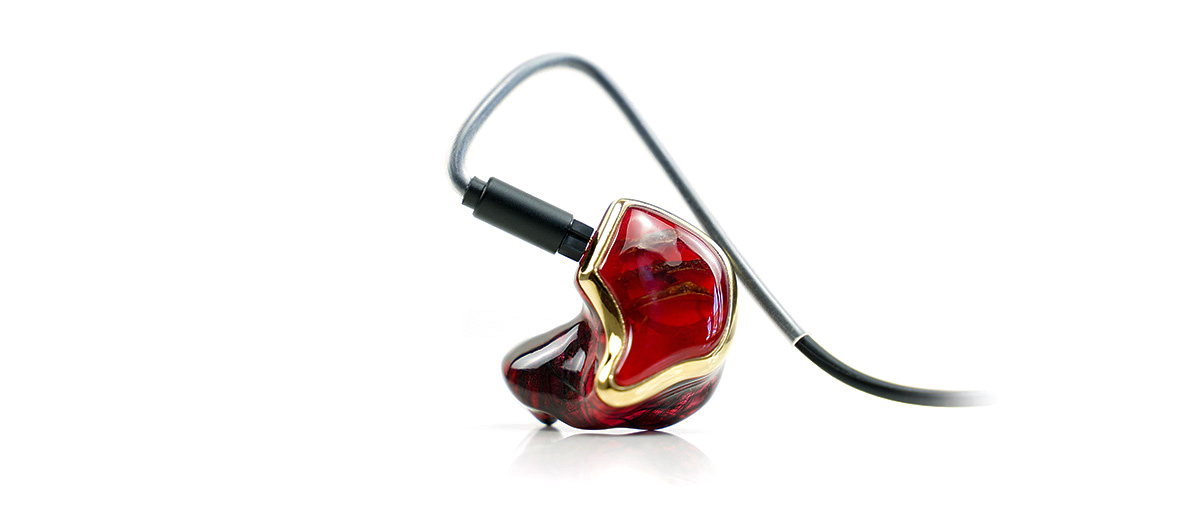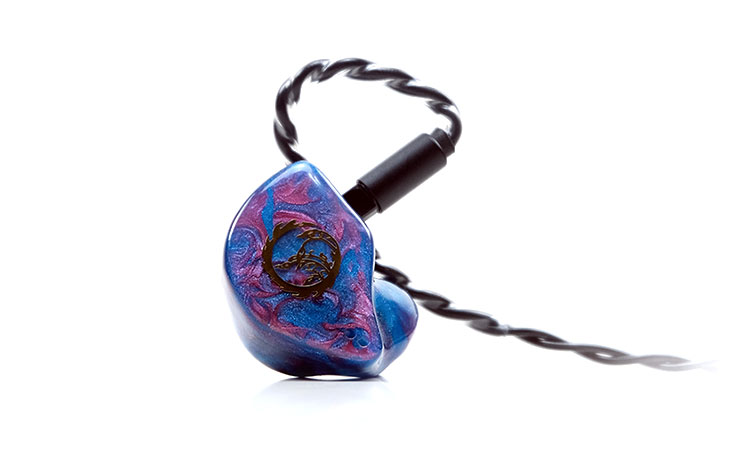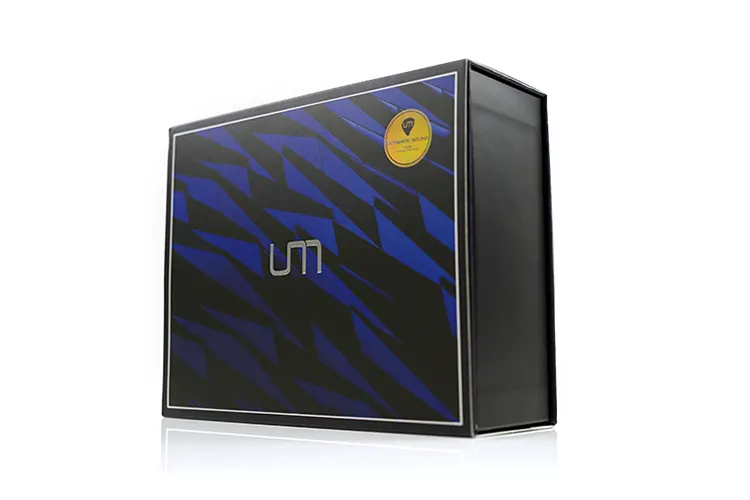Select Comparisons
The following comparisons were completed using a mix of the HiBy RS8, the Chord Electronics Mojo 2, and the Cayin RU7 dongle as the main source/amps. All monitors are in a custom format and compared using their stock cables.
Unique Melody MEST MKII
The 2nd generation MEST MKII was launched in 2021 sporting a number of upgrades over the original MEST. We also reviewed the MEST MKII in that same year which you can read up on in more detail here.
Technical
Both IEMs are hybrid models in either universal or custom format and both use a mix of dynamic, BA, and EST drivers with additional bone conduction technology.
UM has made a number of key changes internally and I suspect this is one of the factors behind the slight increase of the MEST MKIII CF over the MKII. We go from 7 + 1 drivers in the old to 9 + 1 drivers in the new with the addition of a second dual array of EST drivers, (4 instead of 2), and an updated bone conductor design.
The rest of the configuration for each IEM remains the same with a single 10mm dynamic driver for the lows, a dual BA driver unit for the mids and upper mids, and dual BA for the highs.
The MEST MKII uses the older dBC-s dual-sided Bone Conduction System which has now been upgraded to a silver palladium alloy design. The frequency range coverage remains the same at 500Hz to 16kHz, however, the ceramic coating thickness has been increased from 14 to 27 layers to enhance the efficacy of the vibrations from the driver.
There is a slight change in the load and sensitivity of the MEST MKIII CF which I presume is from the additional EST drivers, going from 12.3Ω and 112 dB on the MEST MKII to 14Ω and 104 dB @1kHz 1Vrms.
That sounds like a big drop in sensitivity on paper but in truth, the real-world gap was very minor using the likes of the RS8 balanced output in low gain with Turbo Mode active. You shouldn’t really notice much of a difference here.
Design
Because these are custom designs you do have control over the final looks from UM’s range of plates and shell color schemes, however, we tend to go with whatever their big push is for the review samples.
The MEST MKII was all about dark smoky translucent black tones with tons of fibrous materials encased to give it a singular design with multiple color choices, in this case, it was green and in the original MEST, it was red.
The MEST MKIII CF still pushes the carbon fiber option but it’s more for the shell now with a more unique Fruitwood plate and their new metal frame design that has been creeping into the designs for the last year or more. Color options are blue or in this case red with stock cable nylon jacket color schemes to match.
The MEST MKII is more or less the same shape and form factor as the MEST MKIII CF so both fit just as well as each other with excellent passive isolation for a vented hybrid design.
There are some subtle changes though with the MEST MKIII CF showing a more aggressive level of curving on the sides and a venting hole switch from the front plate to a more discreet 2-pin location on the side.
The stock cables are very different. The Melon Red stock cable of the MEST MKIII CF is beautiful and interesting to look at, more so than the UM Copper M2 cable that comes with the MEST MKII.
However, The Melon Red is a slightly smaller 26AWG OCC copper gauge compared to the 24AWG gauge OCC copper 4-wire geometry on the M2. It is also more challenging to handle with its flat geometry and stiffer nylon jacket.
Performance
The MEST MKII is a bit more about the highs and lows with the MEST MKIII CF aiming for more balance with a slightly stronger midrange emphasis.
That translates to increased sub-bass and upper-treble emphasis on the MKII creating more contrast on its timbre and a weightier lower-register fundamental.
By comparison, the MEST MKIII CF drops the sub-bass up to 50Hz by a few dB and also a more attenuated 5k onwards treble producing a very evenly balanced to slightly warmish harmonic order throughout its frequency response.
Both of these monitors can produce some satisfying bass depth and body when required, however, the MKII will be the more dominating of the two low-ends. Combined with a flatter midrange up to 3k the MKII vocal presence can struggle to push out into its own a bit more compared to the MEST MKIII CF.
Vocals are where the MEST MKIII CF pushes ahead of the MKII in terms of focus. Not only is the harmonic balance more soothing but the body is just a little bit improved as well as the presence with its stronger amplitude up to 3k.
Yes, the presence dip is also stronger from 3-5k so some of the percussion energy and sparkle is lessened compared to the MKII. However, the vocals remain clear, more natural in tone, and to the fore.
That also remains true for backing vocals which have a similar imaging width as the MKII but offer more body and a smoother attack and decay.
The MKII offers a stronger perception of depth and height with its enhanced sub-bass and treble emphasis whereas, despite the good air and similar depth, the slight attenuation on both ends of the MEST MKIII CF tuning marks this version out as a stronger mids performer.
Unique Melody MEXT
The Unique Melody MEXT was launched in mid-2022 and again showed a few interesting tweaks in the company’s developing bone conduction technology. You can read our full review of the MEXT here.
Technical
The MEXT is technically the next step down from the MEST series by forgoing the use of EST drivers and instead relying on dynamic, BA, and bone conduction for its driver makeup.
Inside is a single 10mm dynamic driver for the lows and four balanced armature drivers with 2 for the mids and 2 for the highs using a 4-way crossover. The bone conduction driver is also different from the MEST MKIII CF silver palladium alloy version with the use of an OBC or “Original Bone Conduction” driver.
The OBC is a high-purity copper coil surrounded by a very strong N52 neodymium magnet and a vibrating steel sheet positioned to the rear of the shell so it can vibrate as close as possible to the ear bone.
No frequency range is officially published for this driver but the effect seemed strongest on the lower frequencies from my own testing whereas the MEST MKIII CF version seems more thorough going from 500Hz up to 16kHz.
The efficiency and load of these two IEMs do not seem too far apart on paper with the MEXT rated at 16Ω and 108dB SPL @1kHz 1Vrms compared to 14Ω and 104 dB for the MEST MKIII CF.
Indeed, in our testing with the Cayin RU7 in high gain mode and a volume setting of around 35, both had similar loudness levels and both responded quite similarly to volume adjustments.
Design
Since it is a custom design the MEXT can come in many different visuals with this one officially called Z18. This is a fantasy-themed molten blend of purples and blues extended right through the shell to create a singular design.
It is quite a contrast to the carbon fiber weave of the MEST MKIII CF shells which technically should be stronger due to the materials being used.
Though striking in visual pop, the MEXT design scheme is also a little less opulent compared to the MEST MKIII CF’s richer mix of red translucent, gold rims and that fruitwood faceplate.
I honestly think there will be fans of both but that’s the beauty of custom designs, each to their own. There are also some technical changes between the two with the MEXT using an unprotected pinhole vent on the front of the plate with a dual bore exit on the spout and the MEST MKIII CF’s pinholes on the side with a quad-bore system.
The form factors are similar though the MEST MKIII CF feels a little heavier from the additional drivers and some of the denser materials like the metal rim.
The shaping on the molds of the MEST MKIII CF is also superior to the soft MEXT lines. However, the comfort and isolation levels on both are exactly the same, as in excellent.
The MEXT uses the UM Copper M1 cable which is a 26AWG gauge OFHC copper 4-wire geometry as opposed to the 26AWG OCC copper gauge inside the Melon Red stock cable of the MEST MKIII CF.
The same observations of the M2 apply here to the M1 cable meaning it is not as visually attractive as the Melon Red but is easier to manage.
Performance
For owners of the MEXT thinking is it worth the upgrade then it’s a firm yes. On every level, the MEST MKIII CF outperforms the MEXT, especially on the sub-bass performance which I was not expecting.
On a high level, both have similar extension and amplitude on the low end and both have a characteristic 5-6k subtle treble peak in their FR. However, from 500Hz up to 3k, the MEST MKIII CF is more elevated whereas the MEXT is a bit flatter and with a comparatively lower 1-3k rise.
The MEXT also offers less energy beyond 6-7k and into the highs with less air and sparkle giving it a darker sound with a softer and more rounded tonal quality.
And I think that is where it hits home the most for me, just how much more resolving the MEST MKIII CF is, not just in the enhanced treble presence and better headroom but also in the more sophisticated bass texturing and dynamic impact from the lows and lower mids.
Despite having the same sub-bass fullness, the MEXT sounds softer, and less defined with an almost pillowy impact on its lows whereas the MEST MKIII CF has more grit, detail, and a stronger punch.
The mids is another area where the MEST MKIII CF pulls away. The MEXT sounds comparatively recessed in that region with lower-register male vocals suffering from a lack of presence and space.
The MEST MKIII CF sounds a lot clearer in its vocal delivery. The improved treble tuning creates a more balanced harmonic overtone and also contributes to improved clarity through the midrange timbre.
Unique Melody Maven Pro
The Unique Melody Maven Pro was launched towards the end of 2022 with our subsequent review in early 2023. It is also a hybrid but has no bone conduction technology. You can read our review of the titanium custom format of the Maven Pro here.
Technical
The Maven Pro is also a 12-driver configuration but the mix is a little less exotic with a hybrid blend of non-vented BA and EST drivers and no dynamic driver or bone conduction technology.
The precise driver grouping inside is 4 larger woofer armature drivers for the lows, two full-range drivers for the mids, and a quad pack of BA drivers for the highs up to around 8-10k. Beyond that, you have a dual EST driver array as opposed to 4 inside the MEST MKIII CF for the ultras-highs and metal tubing for each driver group.
The MEST MKIII CF switched from the 4 BA woofers to a single 10mm dynamic driver for the lows with the same count for the mids BA but 2 less 2 BA for the highs using a 5-way crossover instead of the Maven Pro’s 4-way crossover.
The Maven Pro has an impedance rating of 30Ω and 112dB SPL @1KHz 1Vrms so it is actually a fair bit higher for impedance but on paper a little more sensitive than the MEST MKIII CF which is rated at 104 dB @1kHz 1Vrms.
In our real-world testing using a Mojo 2, there was only a slight difference at matched volume levels. On balance, the weightier tuning of the Maven Pro gave me a stronger impression of low-end dynamics whereas with the MEST MKIII CF, I was pushing up the volume level a little more to compensate.
Design
Really different design languages and aesthetics with these two custom format monitors. Just to be aware both also come in slightly cheaper universal alternatives and the precise customs design can be tempered with individual choices.
However, the core materials are much the same with the Maven Pro using an ultra-thin titanium housing and the MEST MKIII CF using a carbon fiber shell with fruitwood plates and gold plated rims.
This sample is a stealthy all-black design with some aggressive faux-grill shaping on the front panel and it does look more low-profile than the livelier red of the MEST MKIII CF visual.
On the hand or in the ear, they also feel very different with the Maven Pro’s denser titanium housing feeling a bit weightier and more robust compared to the MEST MKIII CF shells.
The form factors are quite similar, perhaps a little shallower for the MEST MKIII CF on the rear end of the main shell and you can also quickly pick up on the more intricate curving of the newer shell.
Because there is no venting on the Maven Pro and perhaps due to the denser titanium material it does isolate a bit better than the MEST MKIII CF. However, the fit is the same and the lack of ‘chill’ from the MEST MKIII CF shells might make it comfier in the ear for some.
The Maven Pro uses the UM Copper M2 cable so my observations between it and the Melon Red from the MEST MKII comparison apply here also. Style and visual pop to the Melon Red, handling to the M2.
Performance
These two monitors were built for different styles and tastes with a clear difference in the tuning; more so than the MEXT and MEST MKII when compared to the MEST MKIII CF.
The Maven Pro is the more aggressive of the two monitors with a stronger mid-to-upper bass presence and warmth with a more forward 1-3k tuning. Its BA woofers punch harder and faster and a lot of midrange vocals image closer creating more of an intimate high-energy soundstage.
The MEST MKIII CF is stronger on the sub-bass with that characteristic dynamic driver texture up to 50Hz but more relaxed through the mid-to-upper bass and not as pushed in the vocal imaging. It’s more spacious sounding as a result and more relaxed and natural sounding in its general presentation.
Despite the more relaxed vocal imaging I actually found the MEST MKIII CF vocal imaging to be clear and better separated from background instruments compared to the Maven Pro.
If the bass hits hard the Maven Pro vocals can get overwhelmed with the resulting sound not quite as precise as the MEST MKIII CF equivalent.
Another key difference that stands out for me is the midrange air and percussion timbre. On the Maven Pro, there is a stronger 3-5k dip that dims the percussion presence and rounds the timbre with an even harmonic bias.
The MEST MKIII CF is more filled in through this frequency range and beyond so the headroom is improved and the percussion’s upper harmonic presence is better defined. Percussion, in short, sounds more real, and more energetic with a cleaner hit and snappier dynamics.
Our Verdict
The Unique Melody MEST MKIII CF is the most mature tuning in the MEST series to date. It is less bombastic or exaggerated than what has come before with a balanced, smooth, and very agreeable sound that gives vocals a much better platform to shine.
My personal take is that is also the type of sound that is going to appeal to a very wide audience and offers a lot of flexible pairing options. As preferences go I would take a neutral source with clean amplification to ensure the delivery is not overly lush as the potential resolution and clarity are excellent.
The cons? The cable needs some work. It looks beautiful, to be honest, but the stiffness and lack of flexibility will test your patience.
The price has also edged up a little but do remember you are getting some additional drivers in there that also need to be accounted for. You can also reduce that price in some dealers by opting to buy without the cable which might kill two birds with one fiscal stone.
Overall, I cannot really fault the end product in terms of what goes in your ear. The MEST line remains one of UM’s most enduring performers at least in the custom format that UM consistently excels at.
Unique Melody MEST MKIII CF Specifications
- Driver Counts: 10 Drivers, (hybrid)
- Driver Configuration: 1 Dynamic Bass Driver + 2 BA Mid Drivers + 2 BA treble Drivers + 4 EST Ultra-High Drivers + 1 UM patent Silver-Palladium Alloy Piezoelectric Bone Conduction Driver
- Impedance: 14Ω
- Sensitivity: 104 dB @1kHz 1Vrms
- Frequency Response Range: 20Hz-70kHz
- Crossover: 5-way Crossover
- Socket: 2-Pin Socket
Stock Cable
- Cable: Cobalt Blue Custom Cable or Melon Red Custom Cable
- Sleeve and Coating Material: PVC+Nylon+FEP
- Conductor Material: OCC Copper
- Conductor Gauge: 26AWG
- Number of Conductors: 4






